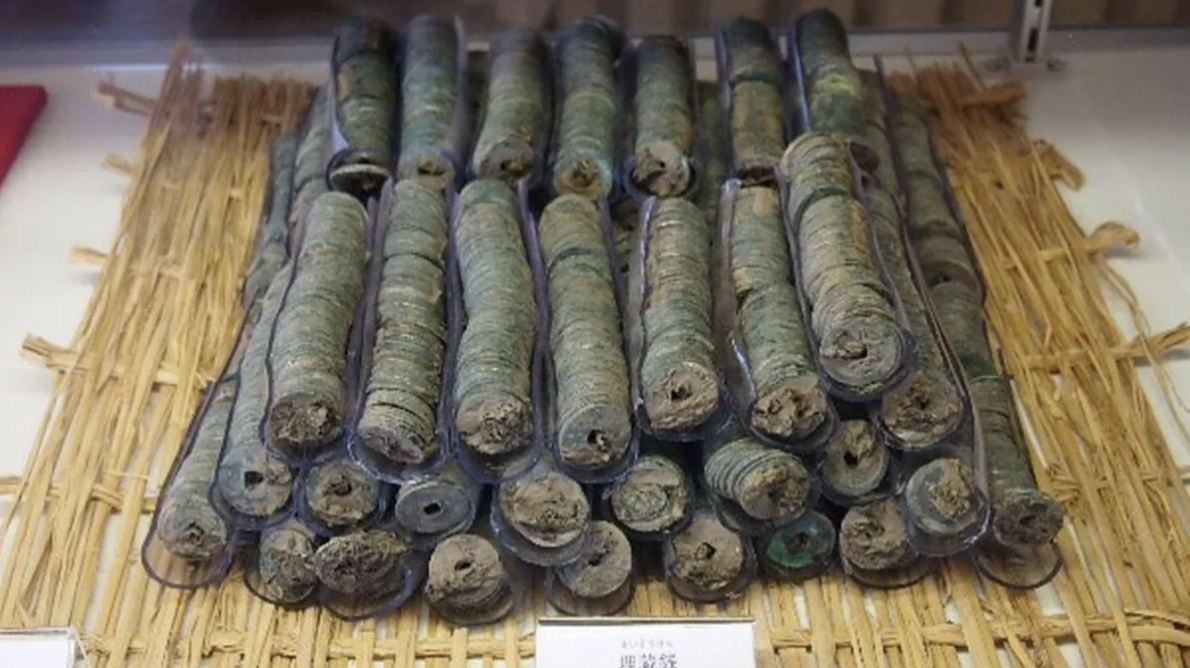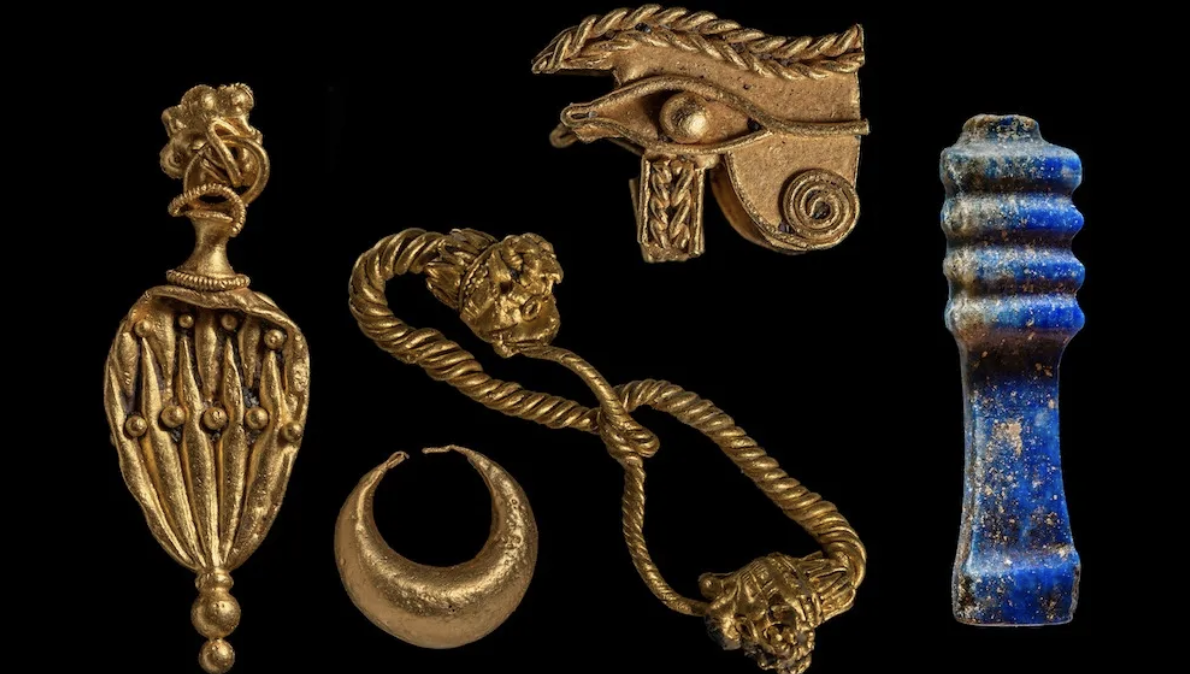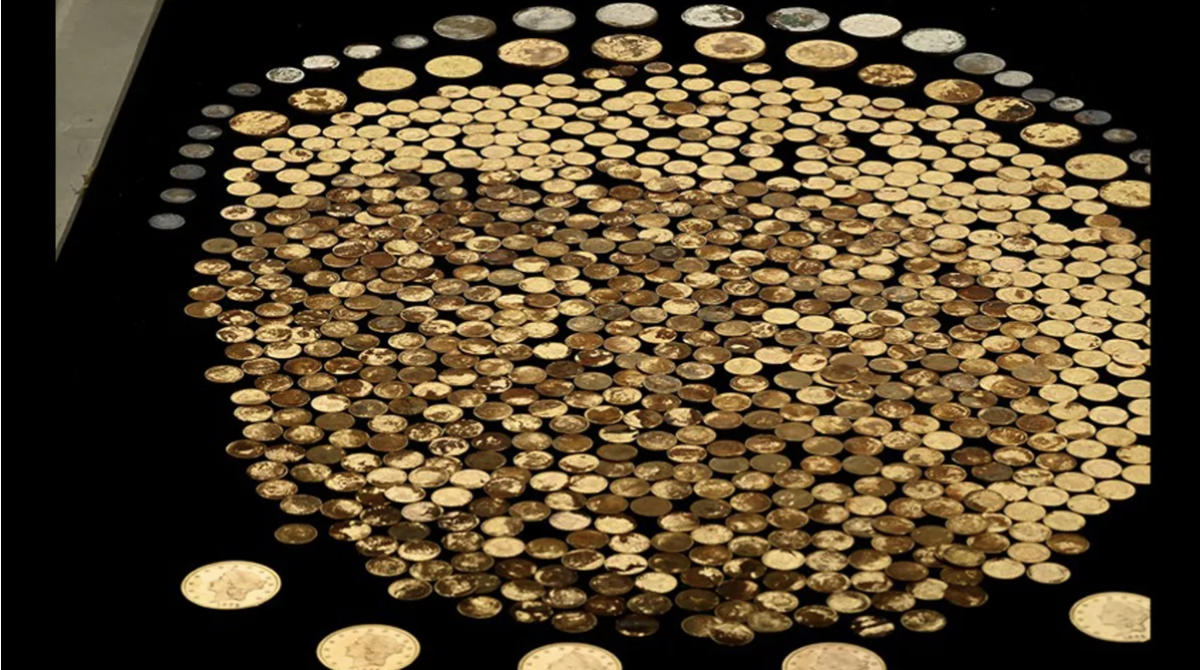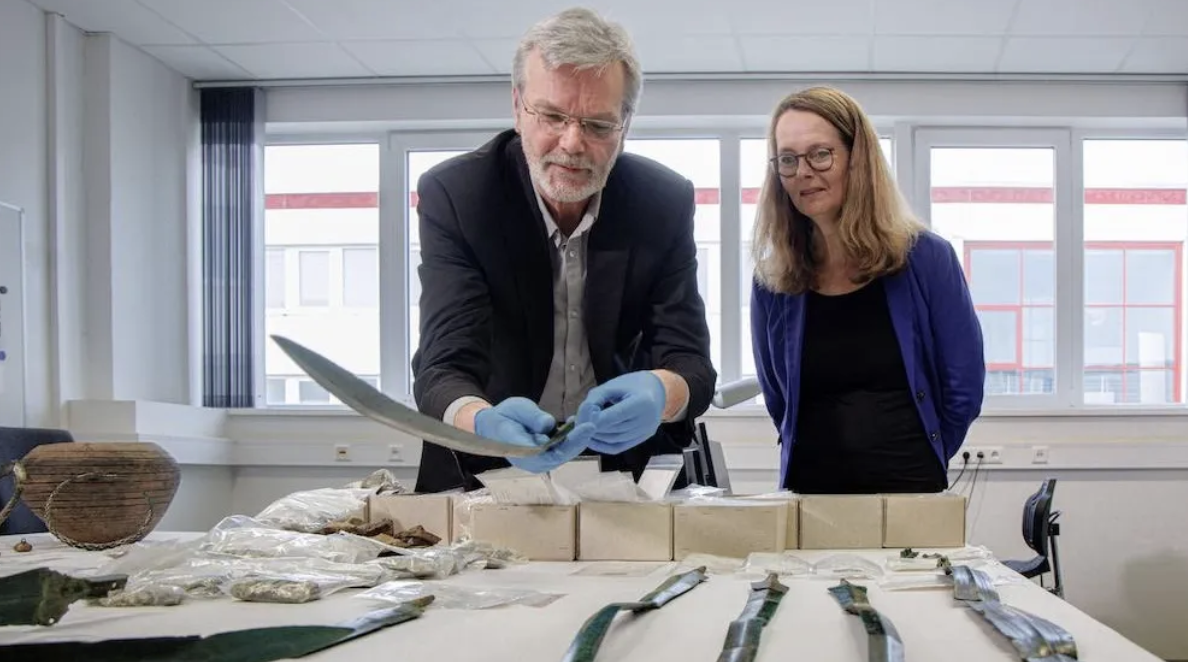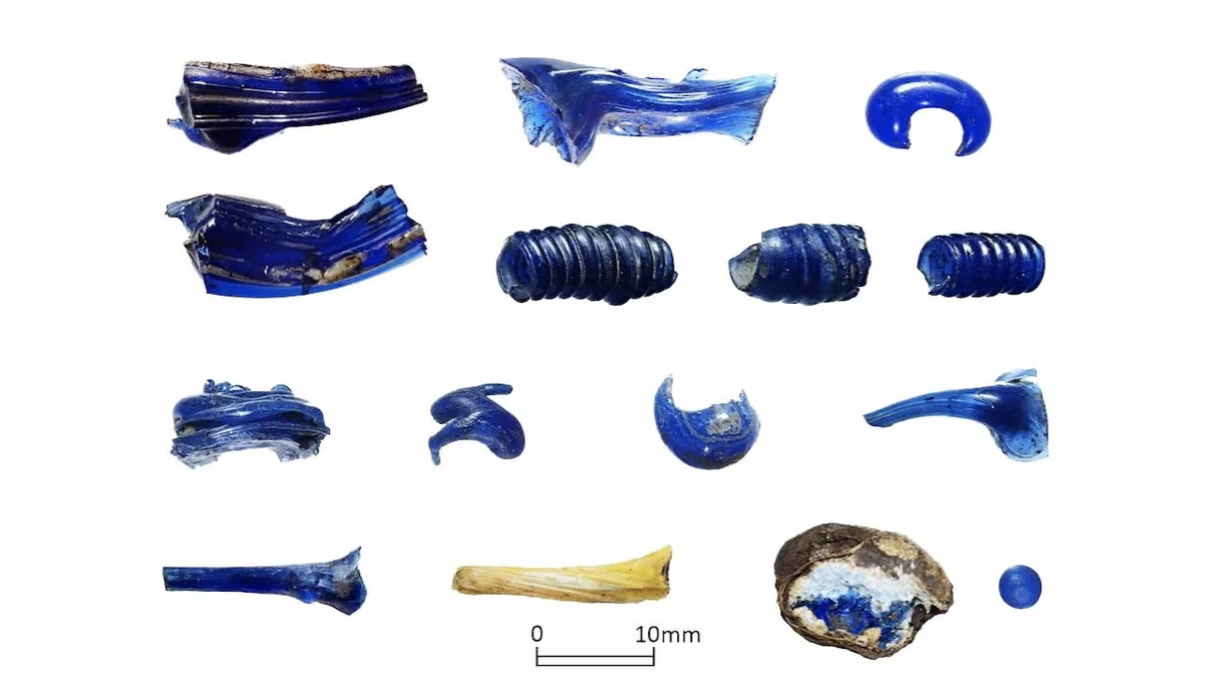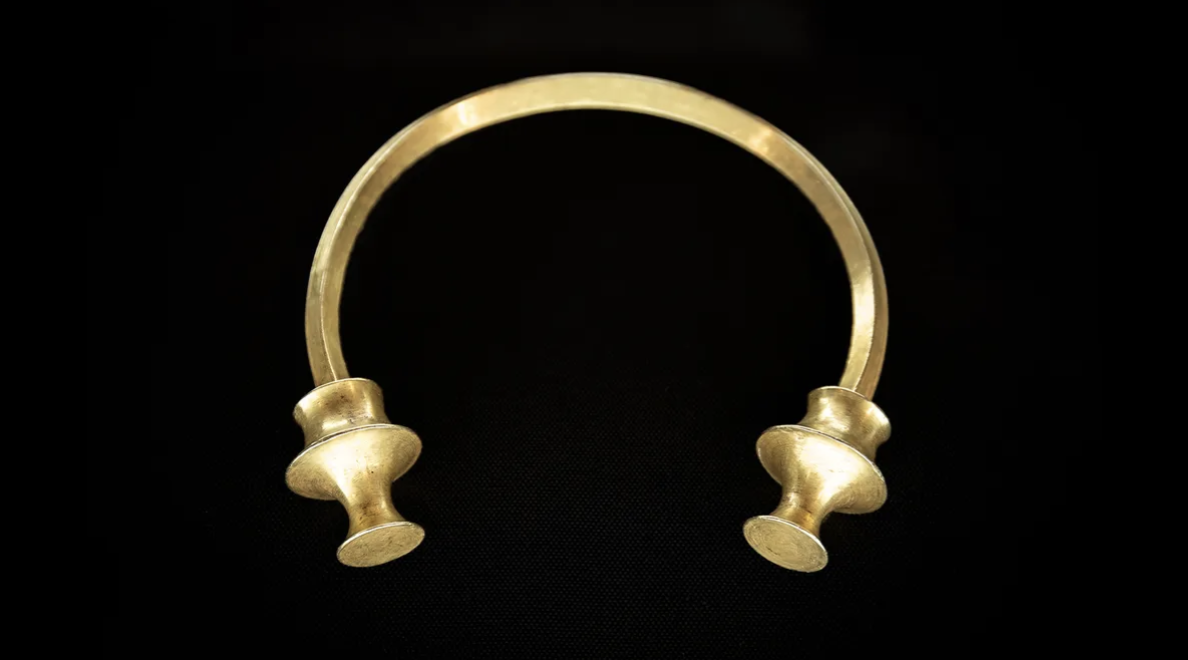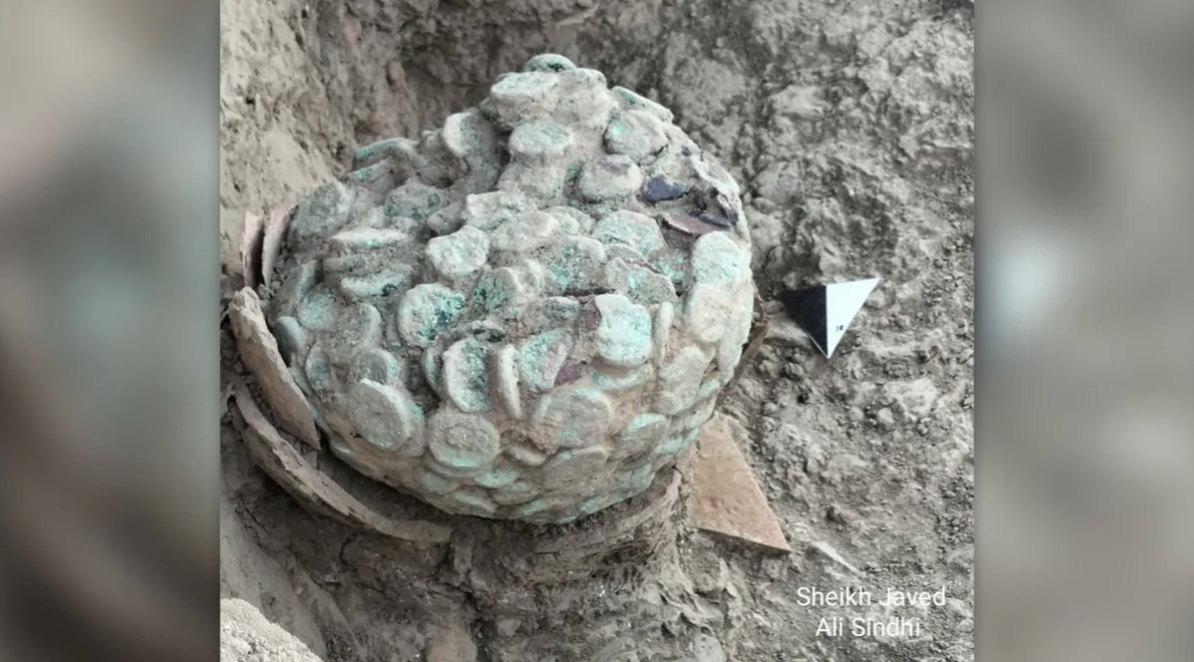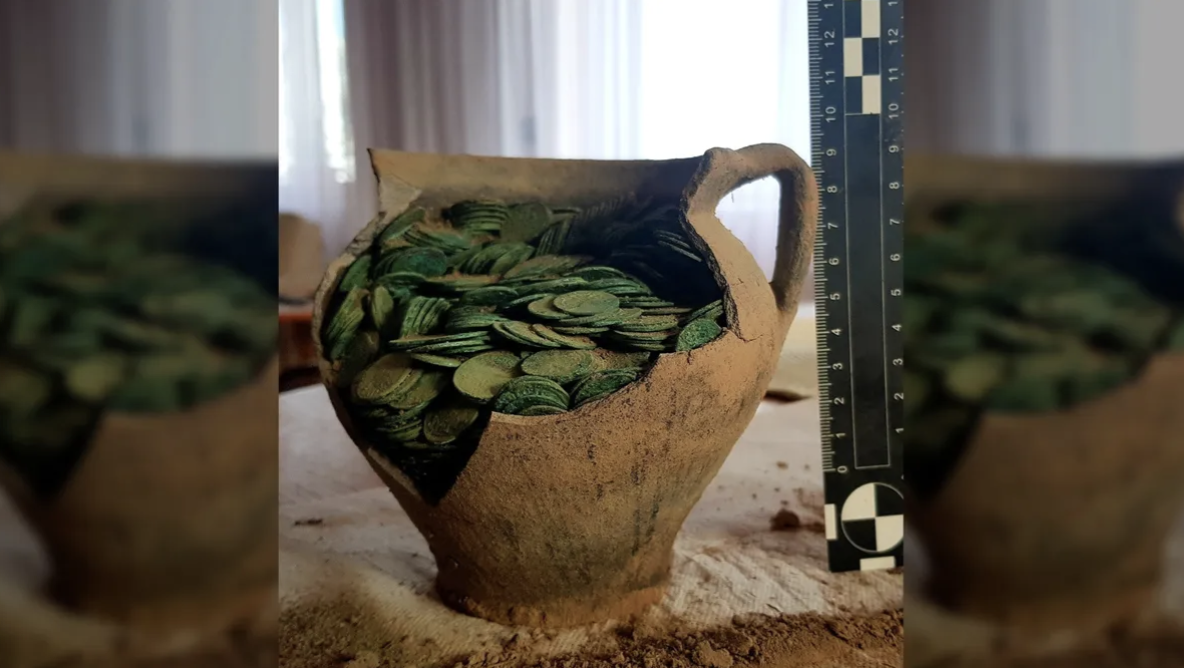10 extraordinary treasures that archaeologists unearthed this year
From stashes of gold and silver coins to intricately designed jewelry, here are some of the top treasure finds of 2023.

As long as humans have been minting coins and crafting beautiful jewelry and other stunning collectibles, an equal number of people have been right behind them searching for these precious finds. Here are 10 extraordinary discoveries made in 2023 that prove that the hunt for buried treasure never gets old.
1. Massive coin collection in Japan
During a factory construction project north of Tokyo, workers were wowed when they unearthed a stash of about 100,000 coins buried at the site. The collection of currency was divided into 1,060 bundles and dated to between 175 B.C. and A.D. 1265. The former originated from China and contained the Chinese inscription "Banliang," which translates to "half ounce." So far, researchers have examined around 334 of the coins, and it's anyone's guess what other treasures will be unveiled.
2. Underwater temple overflowing with sunken treasure in Egypt
Underwater archaeologists exploring a canal off the Mediterranean coast of Egypt found a partially collapsed underwater temple brimming with treasures. Further exploration of the temple, which collapsed sometime during the mid-second century B.C. and was built for the ancient Egyptian god Amun, revealed a wealth of "treasures and secrets," including silver ritual instruments, gold jewelry and alabaster containers.
3. "Lost" rainbow cup minted by Celts in Germany
A 2,000-year-old rainbow cup minted by Celts was found alongside a river in Germany. The cup-shaped gold coin contains a rare design element: a four-pointed star surrounded by arches. The find is one of only three known rainbow cups to contain this motif. Rainbow cups get their name based on a Celtic legend that they are drops of gold that fell to Earth at the end of a rainbow.
4. Civil War-era coins buried in a Kentucky cornfield
A bounty of 700 Civil War-era coins was discovered by a man working in his cornfield in Kentucky. The cache, dubbed the "Great Kentucky hoard," contained hundreds of gold coins minted between 1840 and 1863, as well as a handful of silver coins. Researchers think the collection was buried prior to a Confederate raid during the summer of 1863.
5. "Eye-catching" gold hair ring in a Bronze Age burial in Wales
A "glitzy, golden hair-ring" was part of a Bronze Age burial discovered along a road in Wales. As archaeologists excavated the burial site, they also unearthed a wooden comb that's thought to be the oldest of its kind ever found in the U.K. Both objects were buried alongside the 3,000-year-old cremated remains of a person who was likely of high social status, the researchers concluded.
6. Bronze Age swords and thousands of medieval coins in Germany
A group of volunteer conservationists discovered approximately 8,000 medieval coins and seven Bronze Age swords while working at three separate sites in Germany. Archaeologists think the 3,000-year-old weaponry may have been placed there as part of a sacrificial offering. The coins, which were divided between two locations, were part of the largest Slavic coin hoard from the 11th century.
Get the world’s most fascinating discoveries delivered straight to your inbox.
7. Iron Age glass workshop littered with Celtic coins in the Czech Republic
In the Czech Republic, archaeologists discovered the oldest known glass workshop north of the Alps, and they think it may have been used for ritualistic purposes. The 2,300-year-old workshop contained a number of finished and complete glass and amber items, including beads and bracelets, as well as 2,000 gold and silver coins struck by Celts. They also found a square structure similar to other ancient buildings located across Europe that were used for rituals.
8. Gold necklaces revealed by a landslide in Spain
A landslide in northern Spain exposed two "richly decorated" gold necklaces that were buried around 2,500 years ago. The first of the C-shaped necklaces, known as torcs, was discovered by a utility worker, while the second was unearthed by a metal detectorist. Based on the style and technique used to make the jewelry, archaeologists concluded that the necklaces were crafted around 500 B.C., during the Iron Age in Iberia, and were likely worn by members of the upper class.
9. Coin stash unearthed at an ancient Buddhist shrine in Pakistan
Archaeologists in Pakistan found a collection of 2,000-year-old bronze coins among the ruins of an ancient Buddhist shrine known as a stupa. The coins and shrine are connected to the Kushan Empire, a mainly Buddhist polity that ruled the region from about the second century B.C. until the third century A.D. Corrosion has caused the coins to fuse into a single, green-tinged lump that weighs about 12 pounds (5.5 kilograms).
10. Copper coins tucked away in a clay jug in Poland
A metal detectorist searching for spare tractor parts in a farmer's field in Poland was surprised when he instead found a hoard of 1,000 copper coins buried beneath the topsoil. Further digging revealed a broken clay "siwak" — a locally made jug with a single handle and a narrow neck — overflowing with coins minted in Warsaw during the 17th century. Even when in circulation, however, the coins weren't very valuable, and the entire hoard would have been enough to buy "about two pairs of shoes" at the time, experts said.
Jennifer Nalewicki is former Live Science staff writer and Salt Lake City-based journalist whose work has been featured in The New York Times, Smithsonian Magazine, Scientific American, Popular Mechanics and more. She covers several science topics from planet Earth to paleontology and archaeology to health and culture. Prior to freelancing, Jennifer held an Editor role at Time Inc. Jennifer has a bachelor's degree in Journalism from The University of Texas at Austin.


